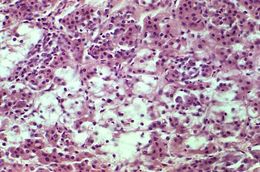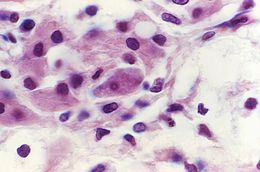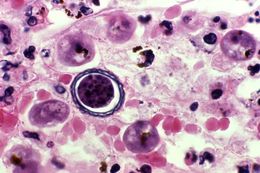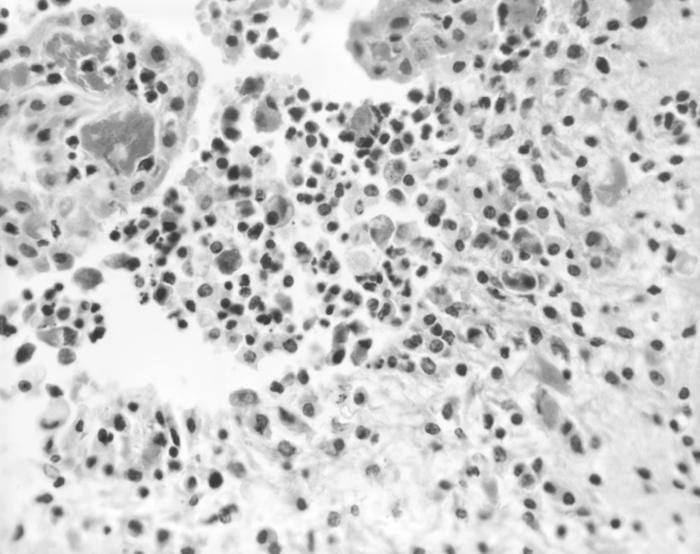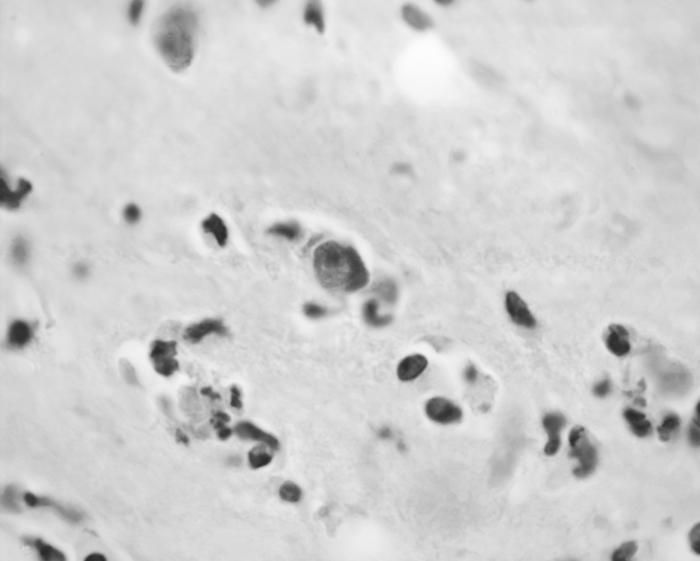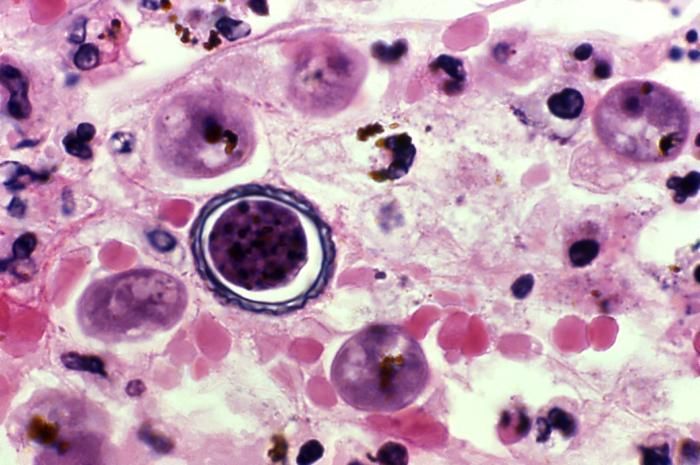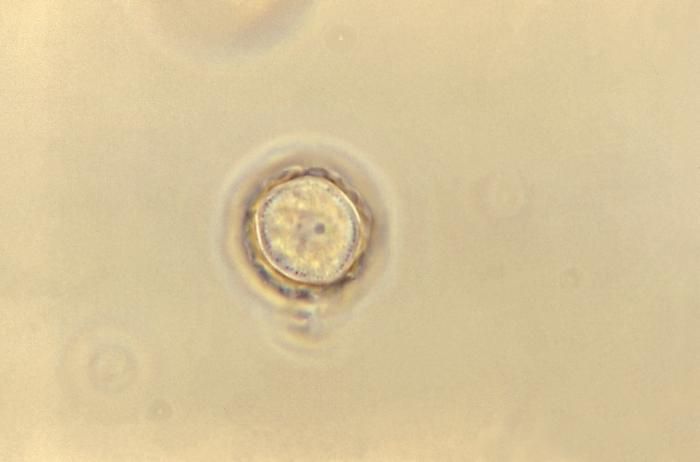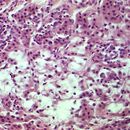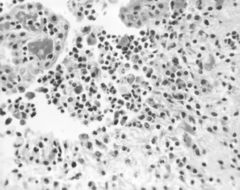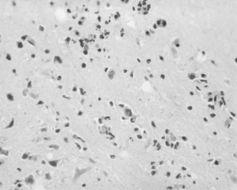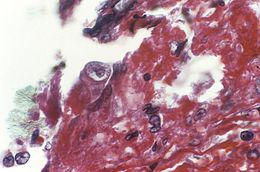-
Magnified 250X, this photomicrograph revealed the presence of Acanthamoeba sp. parasitic microorganisms, which were found in a specimen of human H&E-stained adrenal gland tissue.Acanthamoeba is a microscopic, free-living ameba that is relatively common in the environment. This ameba has been isolated from water (including natural and treated water in pools or hot tubs), soil, air (in association with cooling towers, heating, ventilation and air conditioner [HVAC] systems), sewage systems, and drinking water systems (shower heads, taps). Most people will be exposed to Acanthamoeba during their lifetime and will not get sick. However, Acanthamoeba is capable of causing several infections in humans.Created: 1975
-
Magnified 500X, this 1973 photomicrograph depicted a mouse brain tissue specimen stained using the hematoxylin and eosin (H&E) staining technique, and revealing the presence of Acanthamoeba polyphaga protozoa.Acanthamoeba is a microscopic, free-living ameba commonly found in the environment that can cause rare but severe illness. Acanthamoeba causes three main types of illness involving the eye (keratitis), the brain and spinal cord (Granulomatous Amebic Encephalitis), and infections that can spread from an entry point to the entire body (disseminated disease).Created: 1973
-
Magnified 1000X, this photomicrograph revealed the presence of Acanthamoeba sp. parasitic microorganisms, which were found in a specimen of human H&E-stained adrenal gland tissue.Acanthamoeba is a microscopic, free-living ameba that is relatively common in the environment. This ameba has been isolated from water (including natural and treated water in pools or hot tubs), soil, air (in association with cooling towers, heating, ventilation and air conditioner [HVAC] systems), sewage systems, and drinking water systems (shower heads, taps). Most people will be exposed to Acanthamoeba during their lifetime and will not get sick. However, Acanthamoeba is capable of causing several infections in humans.Created: 1975
-
Magnified 1200X, this 1973 photomicrograph depicted a mouse brain tissue specimen stained using the hematoxylin and eosin (H&E) staining technique, and revealing the presence of Acanthamoeba polyphaga protozoa.Acanthamoeba is a microscopic, free-living ameba commonly found in the environment that can cause rare but severe illness. Acanthamoeba causes three main types of illness involving the eye (keratitis), the brain and spinal cord (Granulomatous Amebic Encephalitis), and infections that can spread from an entry point to the entire body (disseminated disease).Created: 1973
-
This photomicrograph depicted a magnified view of brain tissue within which was a centrally located Acanthamoeba sp. cyst. Acanthamoeba spp. are opportunistic free-living amebae, capable of causing granulomatous amebic encephalitis (GAE) in individuals with compromised immune systems.Created: 1977
-
Magnified 500X, this 1973 photomicrograph depicted a mouse brain tissue specimen stained using the hematoxylin and eosin (H&E) staining technique, revealing the presence of Acanthamoeba polyphaga protozoa.Acanthamoeba is a microscopic, free-living ameba commonly found in the environment that can cause rare but severe illness. Acanthamoeba causes three main types of illness involving the eye (keratitis), the brain and spinal cord (Granulomatous Amebic Encephalitis), and infections that can spread from an entry point to the entire body (disseminated disease).Created: 1973
-
Magnified 1000X, this photomicrograph revealed the presence of Acanthamoeba polyphaga parasitic microorganisms, which were found in a specimen of human trichrome-stained corneal tissue.Acanthamoeba is a microscopic, free-living ameba that is relatively common in the environment. This ameba has been isolated from water (including natural and treated water in pools or hot tubs), soil, air (in association with cooling towers, heating, ventilation and air conditioner [HVAC] systems), sewage systems, and drinking water systems (shower heads, taps). Most people will be exposed to Acanthamoeba during their lifetime and will not get sick. However, Acanthamoeba is capable of causing several infections in humans.Created: 1975
-
Magnified 1125X, this 1973 photomicrograph depicted an Acanthamoeba polyphaga protozoan cyst.Acanthamoeba is a microscopic, free-living ameba commonly found in the environment that can cause rare, but severe illness. Acanthamoeba causes three main types of illness involving the eye (keratitis), the brain and spinal cord (Granulomatous Amebic Encephalitis), and infections that can spread from an entry point to the entire body (disseminated disease).Created: 1973

